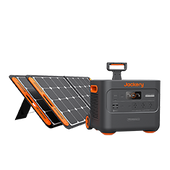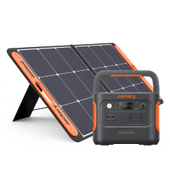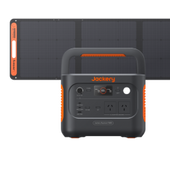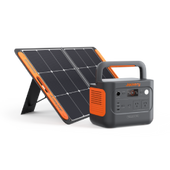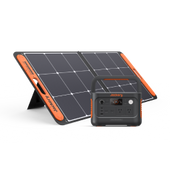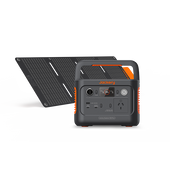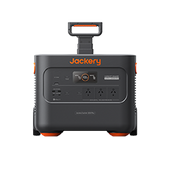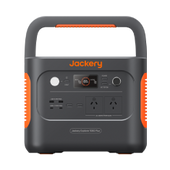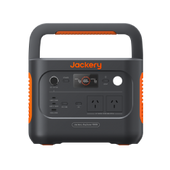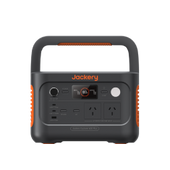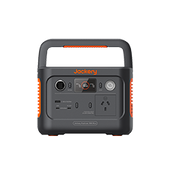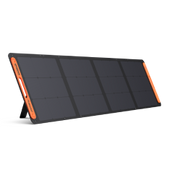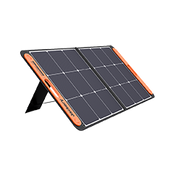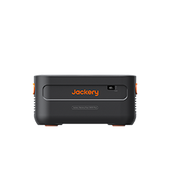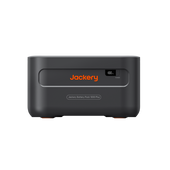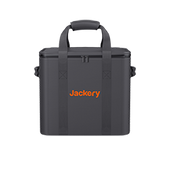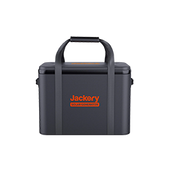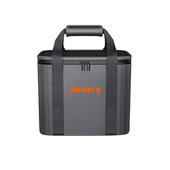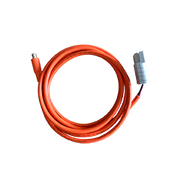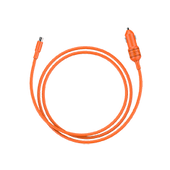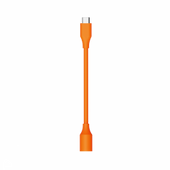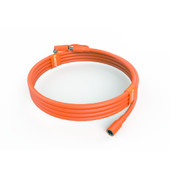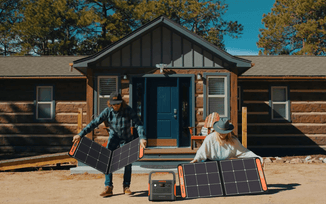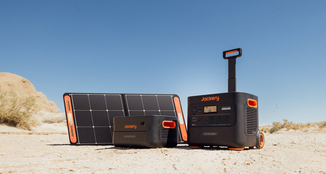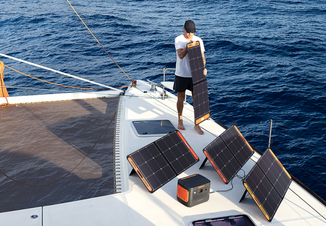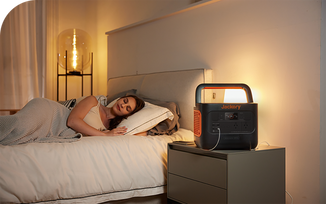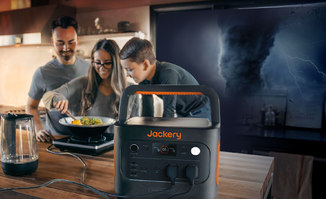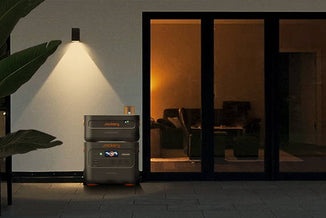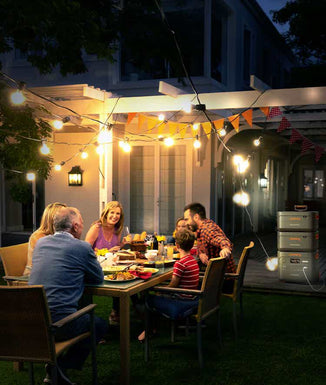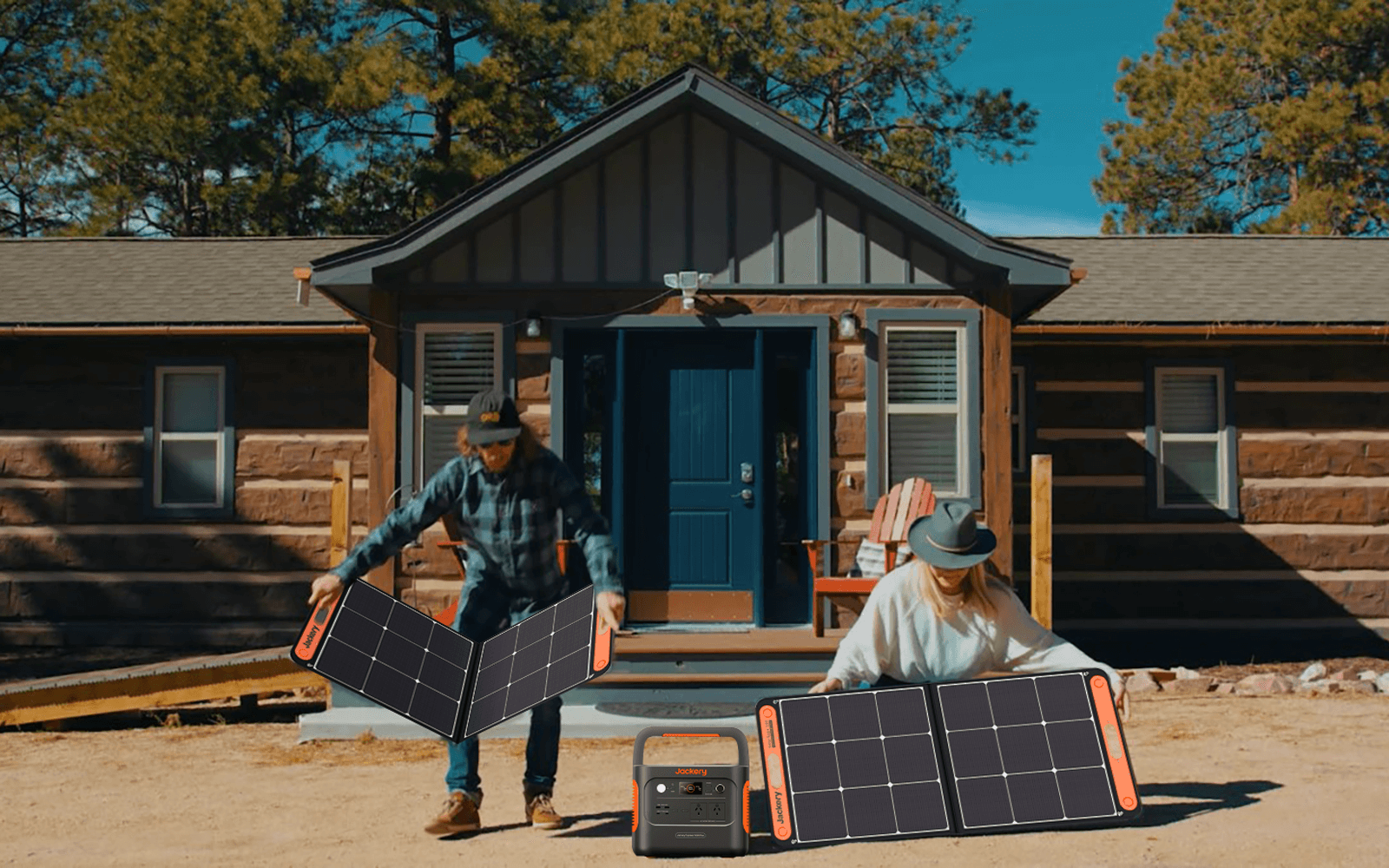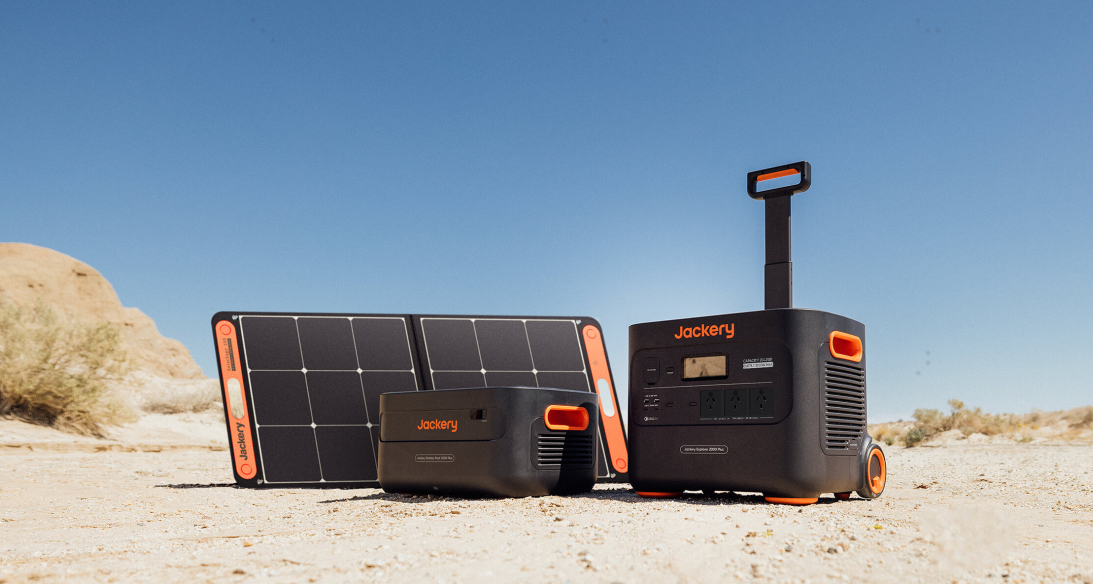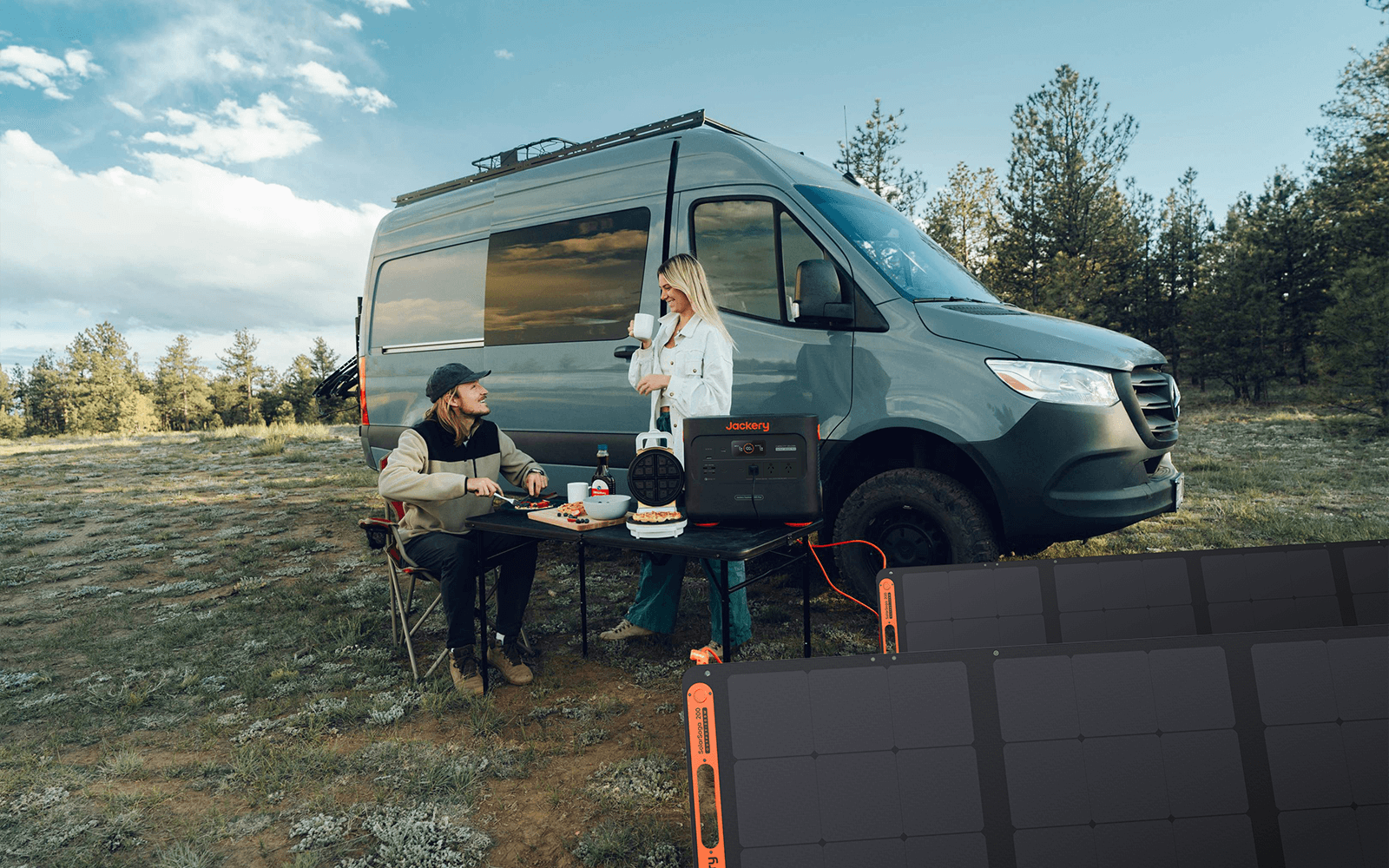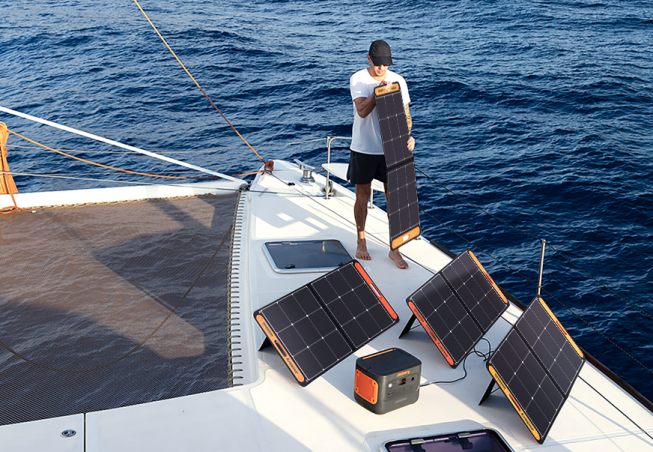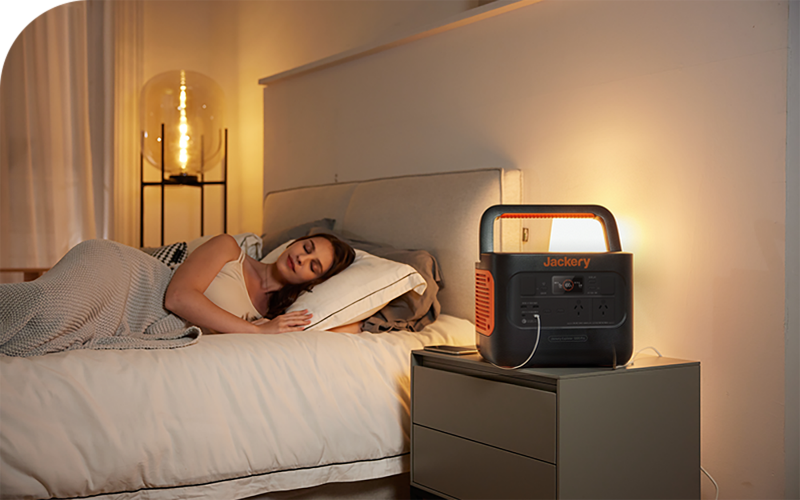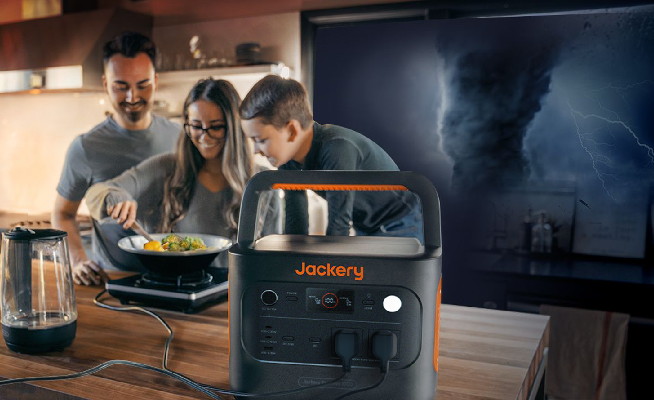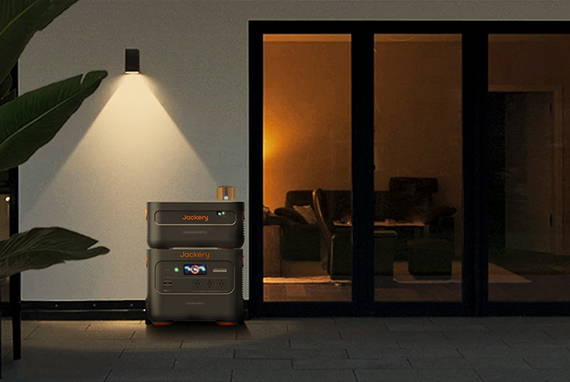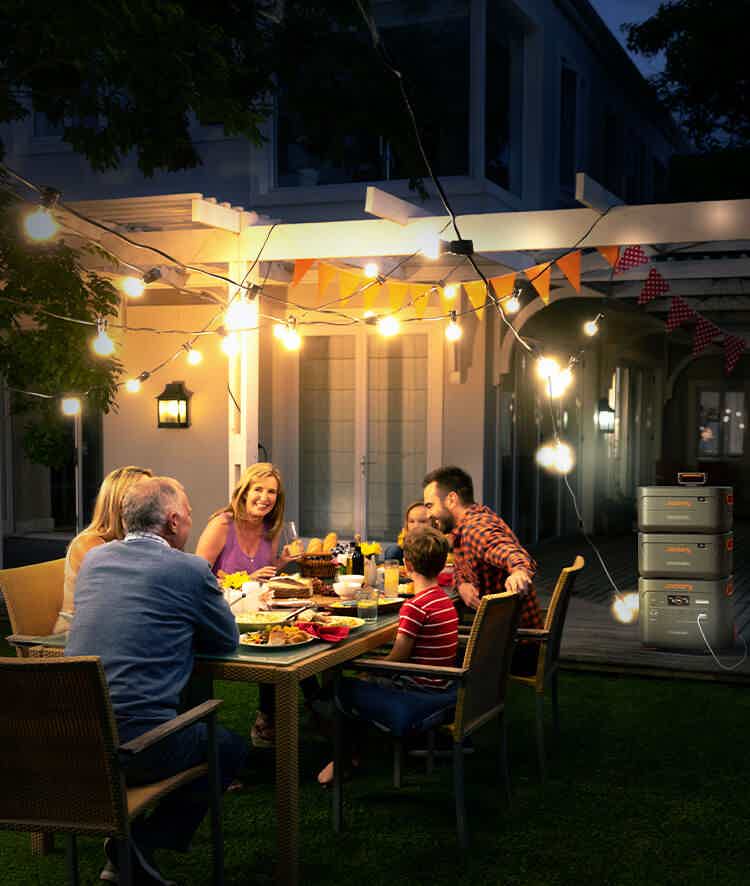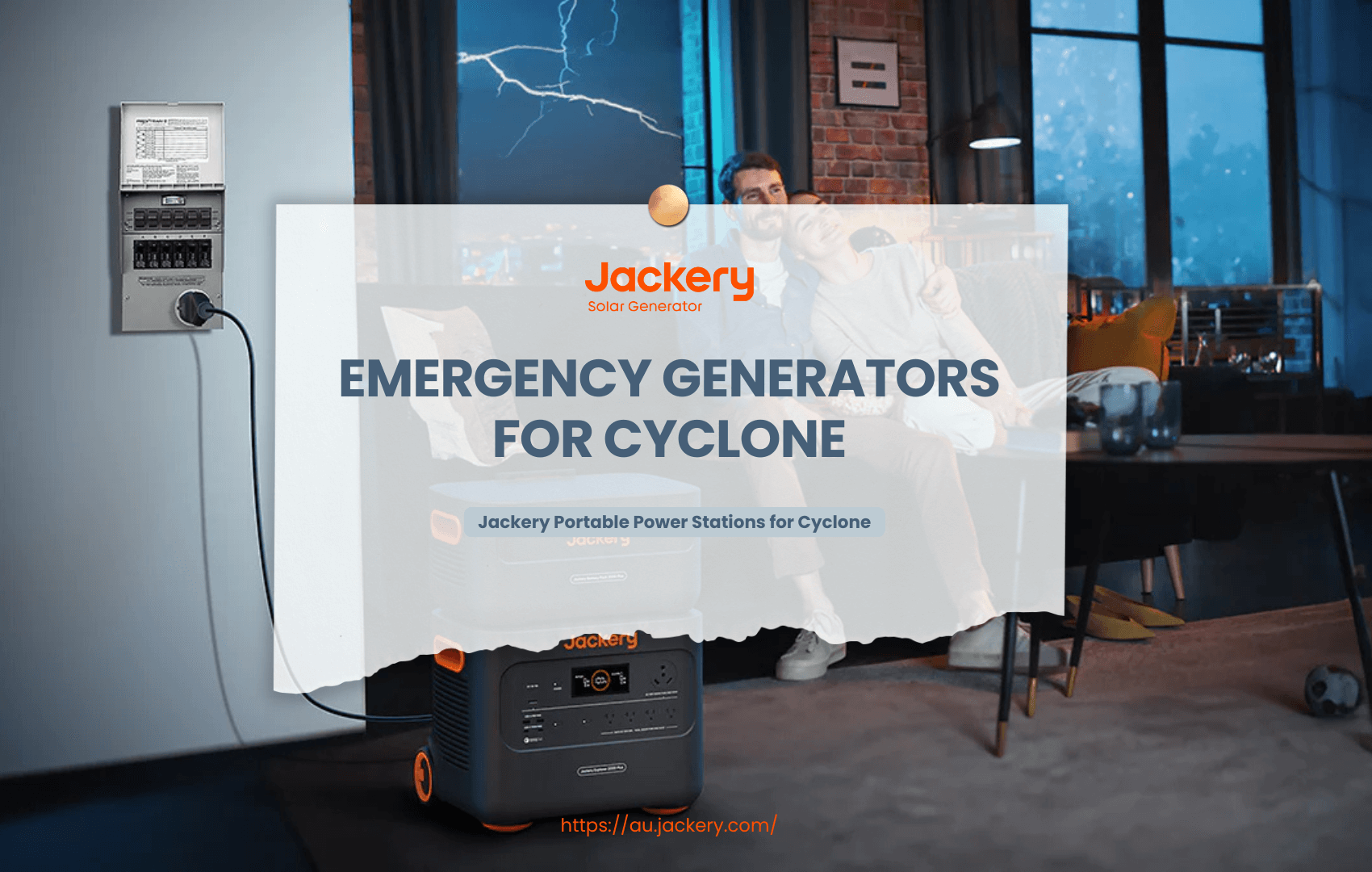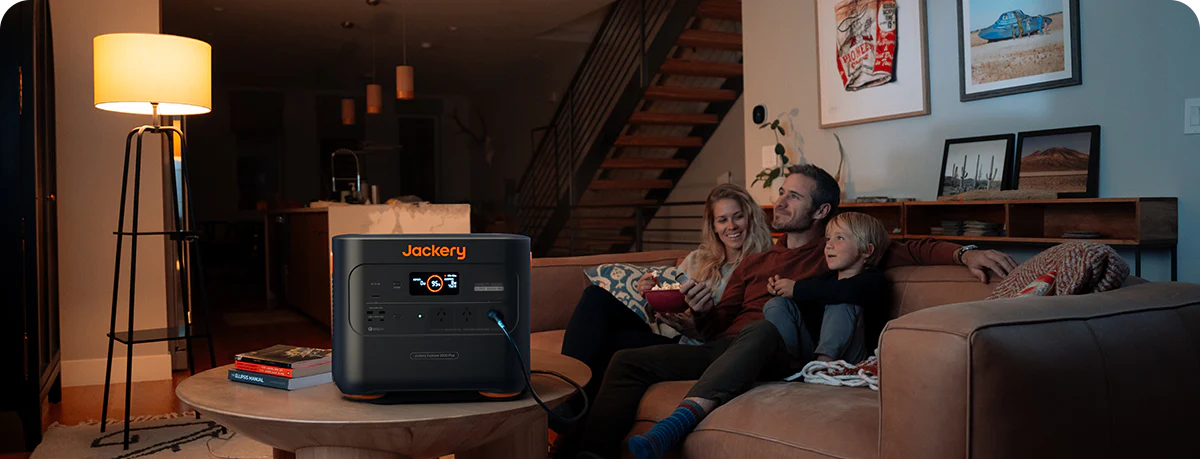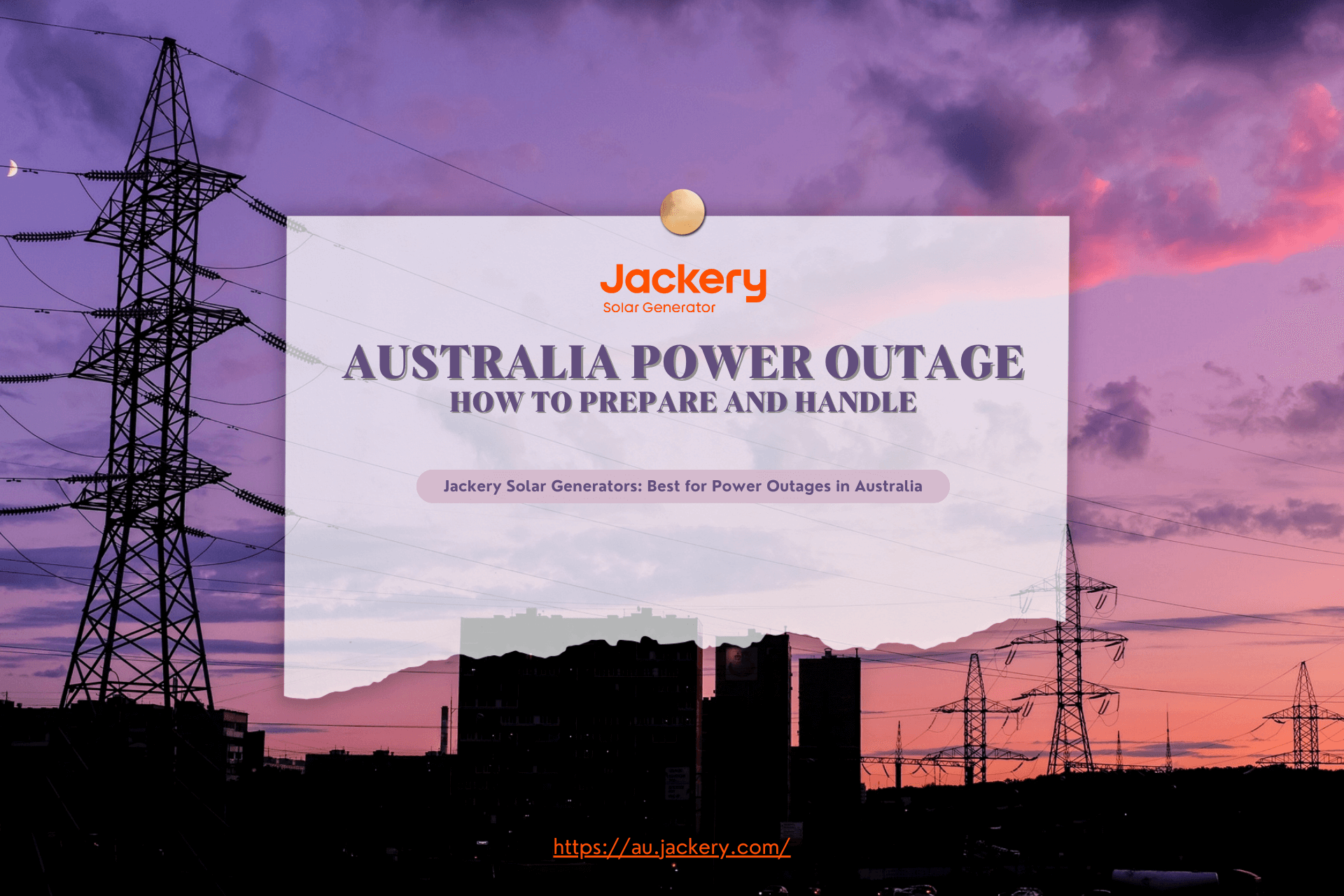|
Key Takeaways: |
|
- Emergency lights automatically activate in case of a power outage or other emergency where standard lighting is unavailable. - There are various emergency lights, such as exits, emergency escapes, high-intensity discharge, and floodlights. - To find The most appropriate emergency light, you should assess your needs first. - Durability and weather resistance, energy efficiency, and visibility and legibility of signage. - We recommend Jackery Explore 600 Plus and 300 Plus for charging the lights and other appliances or devices in an emergency. |
What Is an Emergency Light?
When conventional lighting is unavailable, emergency lighting automatically turns on in the case of a power loss or other emergency; it is usually installed in public spaces like malls, theatres, airports, hospitals, schools, and offices to provide illumination for safety measures or evacuation in the event of an emergency.
Emergency lighting systems can be maintained (always on) or non-maintained (only engaged during an emergency). Typically, they include backup power sources like batteries or generators. Exit signs, powerful floodlights, or dim ambient lighting that is just right to direct people to safe havens within buildings are some examples of illumination that can be used.
Importance of Emergency Lights
Building occupants must be kept secure during emergencies by having emergency lights. The following justifies the need for emergency lighting:
|
To illuminate escape routes
|
Normal illumination may not be available in a fire or other emergency, making it challenging for individuals to find their way out of a facility. Emergency lighting aims to illuminate escape routes and provide safe directions to exits and other locations. |
|
To ensure continuity of operations
|
Continuous power supply is necessary for several businesses, including manufacturing facilities, data centres, and hospitals, to protect patients and prevent the loss of essential data. In the event of a power loss, emergency lighting provides a backup power supply to guarantee the continuation of crucial operations. |
|
To comply with regulations |
Building codes and safety laws frequently require emergency lighting to ensure that buildings meet safety requirements. |
|
To reduce panic and confusion
|
People may lose their minds and panic in an emergency, which can result in fatalities and serious injuries. During an emergency, emergency lighting provides clear illumination and advice, which helps to lessen panic and confusion. |
The Main Types Of Emergency Lights
Building emergency lights come in various forms, each with a distinct function. Some of the most popular categories are as follows:
Exit Lights
The most popular kind of emergency lights are meant to show where the exits are in the event of an emergency. Usually installed above doors, they have battery backup power to keep them light even during a power outage.
Emergency Escape Lights
These lights illuminate escape pathways in an emergency and guarantee that people may leave a building safely. They are frequently placed in stairwells and along walls.
High-Intensity Discharge Lights
Due to their extreme brightness, HID lights are commonly used in vast spaces like factories, sports arenas, and warehouses. They are made to offer brilliant illumination during a power outage or other emergency.
Floodlights
During an emergency, floodlights are strong lights that illuminate large spaces such as parking lots, building exteriors, and outside walkways.
Difference among Maintained, Non-maintained and Sustained Emergency Lights
There are three different kinds of emergency lighting systems: maintained, non-maintained, and sustained. Their functions vary depending on whether or not the system is used in an emergency. Here's a quick rundown of each kind:

Maintained Emergency Lights: These lights are always on in regular and emergencies. They are usually placed in data centres, hospitals, and labs that need constant lighting. Maintained emergency lights feature backup batteries that take over during an electrical outage and are linked to the building's primary power source.
Non-Maintained Emergency Lights: These are the kind of lights that come on only in dire situations. They are usually put in places like stairwells and hallways that are frequently lighted well. Non-maintained emergency lights feature backup batteries that kick in when the power goes out but are not connected to the building's primary power source.
Sustained Emergency Lights: These lights have two modes of operation: maintained and unmaintained. Under normal circumstances, they are maintained and connected to the building's primary power source.
The lights convert to battery power and operate as unmaintained lights in an emergency. Places where illumination is necessary for both regular and emergency purposes are usually equipped with sustained emergency lights.
Which is Better: Maintained, Non-Maintained or Sustained Emergency Lights?
There isn't a universally applicable solution to this problem because the ideal emergency lighting system relies on the particular demands and specifications of the structure or institution. Every kind of emergency lighting system, whether sustained or maintained, has pros and cons.
1. Maintained Emergency Lights:
- Advantages: They maintain constant illumination throughout the day and during emergencies to ensure the area is always lit. They are usually placed in places like hospitals or labs that need constant lighting.
- Disadvantages: They might be more expensive to install and operate because they require a continuous power source and backup batteries, which is not the case with other emergency lighting systems.
2. Non-Maintained Emergency Lights:
- Advantages: Only run in an emergency, lighting the space and assisting people safely, finding their way to exits or other secure locations. They are usually deployed in stairwells and corridors that are naturally well-lit and do not require constant lighting. Because they don't need a continuous power source, non-kept emergency lights are usually less expensive to install and maintain than maintained ones.
- Disadvantages: They might not be appropriate for all kinds of buildings or institutions, though, and they might not offer enough lighting under normal circumstances.
3. Sustained Emergency Lights:
- Advantages: Provide continuous lighting under normal circumstances and transition to non-maintained operation in an emergency, offering the benefits of both maintained and non-maintained emergency lights. They are usually deployed in places like data centres or hospitals that need emergency lighting in addition to continuous lighting.
- Disadvantages: Since they need a control system to switch between maintained and non-kept operation, they could be more challenging to install and operate than other emergency lighting systems.
The ideal kind of emergency lighting system ultimately depends on the particular demands and specifications of the structure or building and the relevant construction norms and laws. A competent specialist, such as an electrical engineer or licenced electrician, can determine the perfect type of emergency lighting system for a specific building or facility.
Different Test Systems Used for Emergency Lighting
Depending on the installed fittings and the testing system included in the building design, multiple methods exist for testing an emergency lighting and escape system.
To guarantee that they illuminate via battery backup power for a length that would allow inhabitants to safely evacuate a building in the event of a power outage, all exits and emergency lights must be tested twice a year (a minimum of 90 minutes in AU, 30 or 90 min in NZ depending on the site). Any flaws or non-conformances, maintenance histories, and the duration of test results must all be documented in a paper or digital log book.

Manual Duration Testing
A manually tested system's emergency and exit lights are connected to a test timer. The standard illumination should continue to function even after the test timer is set to activate. First, a testing contractor should visit the location to ensure all fixtures are powered on (check the charge light status) and replace any darkened fluorescent tubes. The next step is to set the test timer to turn off the emergency lighting, wait 90 minutes (30/90 minutes in New Zealand), and check to see if each fitting is still operational.
|
Pros |
Ability to buy the cheapest fittings available from any brand. |
|
Cons |
Testing can be very costly and labour-intensive; it requires someone to start and oversee the test, which involves doing several laps around the location. Findings are frequently erroneous. It is seldom feasible to check every light on a building in precisely ninety minutes (30/90 minutes in New Zealand). In addition, the tester needs to identify the reason behind malfunctions, which frequently necessitates total replacements rather than simpler fixes like battery replacements. |
Automatic Testing Systems
There are two main types of automatic testing systems for emergency lights.
1. Self-Testing Exits and Emergency Lights
Every six months, emergency fittings with built-in timers enter duration test mode automatically; no physical action is required to start the test. After the test, every fitting will show a pass/fail result on its LED status indicator.
For the length of the test, a tester will only need to complete one walk-around to record a pass or fail. If the location contains emergency fluorescent tube fittings that require lamp changes before a test, further walk-arounds can be necessary.
|
Pros
|
It is more accessible to identify the root cause of errors, resulting in lower maintenance expenses and faster and less expensive testing (by more than 50%). More professional and more accessible test reporting. The capacity to oversee several sites and remotely view test reports. |
|
Cons |
To obtain a duration test result, each fitting must be physically inspected. Upgrading to a premium fitting will result in a slightly higher purchasing price (around 10%–15% more than the least expensive option); however, the higher cost is countered by a longer-lasting fitting. |
2. Computer Monitored System
A centrally controlled system for emergency lighting testing and maintenance benefits extensive facilities. This means that when duration testing is carried out on a site, an individual does not have to be present to inspect fittings physically.
Pros
There is no dependence on an individual's recall of visiting the location, starting a test, or gathering data from a duration test. Test reports, comprehensive site information, and BMS dashboard integration are all accessible remotely.
Reduced environmental effects throughout the system's life because fewer tests require travel to the location. Total control over the testing day and time; split the areas if necessary and conduct the test outside busy hours.
Systems for flexible, secure wireless networking without a backbone or conventional infrastructure. Lifetime support programme with a dedicated point of contact and servicing to maintain the system's optimal performance.
Cons
Specific outdated surveillance systems on the market necessitate extra cable to every exit and emergency, connected by a communication backbone, adding to the expense and complexity.
Commissioning is necessary for monitored systems, and some systems—like DALI—need to be set up or adjusted by expensive outside integrators. Consider suppliers offering complimentary lifetime training and support and a system accessible to qualified contractors.
The initial cost of purchasing monitored exit and emergency lights is more than a simple manual test fitting. Any future fixtures and additions must match the brand and model of the installed system to keep it working.

Jackery Portable Power Stations for Emergencies
An emergency light is essential for camping, blackouts, and other low-light scenarios. LED emergency lights with Jackery Portable Power Stations make for a dependable and durable lighting solution. Jackery's products are a great companion for unforeseen circumstances because they give clean, sustainable energy. Jackery maintains your surroundings safe and bright, whether you're going on an outdoor trip or a storm.
If you consider investing in an emergency lighting system, you can also consider a portable power station, which can charge not only lights but also important communication devices or medical machines in an emergency.
Jackery Explorer 600 Plus
Meet the Jackery Explorer 600 Plus Portable Power Station—your versatile solution for portable energy. Equipped with 800W output and 632Wh capacity, this power station powers 99% of standard appliances, making it indispensable for emergency preparedness. It delivers dependable energy wherever needed, from emergency gear to essential medical devices.

The Explorer 600 Plus features three efficient charging modes, including an Emergency Super Charging Mode that replenishes its battery in just 1 hour. Its robust LFP battery ensures a 10-year lifespan, capable of enduring 4000 cycles while retaining 70%+ of its capacity. It also includes UPS functionality with a rapid switch time of under 20ms, protecting sensitive devices during outages.
With quiet operation (≤22dB) and a lightweight design of just 7.3 kg, the Explorer 600 Plus is both carrying-friendly and reliable. Whether supporting home backup or preparing for emergencies, trust in its durable, shockproof, and fireproof build to keep your devices powered.
|
Jackery Explorer 600 Plus Working Hours for Emergencies |
|
|
Lights (30W) |
16.9H |
|
Radio (60W) |
8.4H |
|
Walkie Talkie (50W) |
10.1H |
|
CPAP Machine (200W) |
2.5H |
|
Ventilator (20W) |
25.3H |
Jackery Explorer 300 Plus
The Jackery Explorer 300 Plus Portable Power Station redefines portability and performance. Weighing just 3.75kg, this ultra-lightweight power station is designed for maximum convenience, allowing you to carry it in your backpack for emergencies easily. Its compact size doesn't compromise its power, offering a 288Wh capacity and 300W output to keep your essential devices running smoothly.

Equipped with cutting-edge features, the 300 Plus ensures versatility for various scenarios. Its dual USB-C ports with up to 100W output support fast and simultaneous charging, making it ideal for laptops, tablets, and smartphones. With four charging options—solar, AC wall outlet, car port, and USB-C—you'll always have a way to recharge, whether at home, on the road, or in the wilderness. Plus, it's whisper-quiet and completely emission-free, ensuring it is both eco-friendly and convenient.
The Explorer 300 Plus is built to last, featuring an LFP battery with an impressive 10-year lifespan and over 3,000 cycles to 80% capacity. Safety is at the core of its design, with advanced ChargeShield Technology offering 52 layers of protection against overvoltage, short circuits, and more.
|
Jackery Explorer 300 Plus Working Hours for Emergencies |
|
|
Lights (30W) |
8H |
|
Phone (29W) |
13 Times |
|
Walkie Talkie (50W) |
4.8H |
|
CPAP Machine (200W) |
1.2H |
|
Ventilator (20W) |
12H |
How To Choose the Emergency Lights for Your Building?
Compliance with applicable Australian Standards is essential to guaranteeing the efficient operation of these systems.
The National Construction Code (NCC) mandates that exit and emergency lighting be compliant for both government and commercial structures. This code outlines the minimal specifications for emergency lighting systems and provides information on light source kinds, locations, and testing protocols.

Assessing Your Facility's Needs
Knowing a facility's strengths and weaknesses is the first step in creating a safe and effective one. This evaluation encompasses multiple critical elements.
Step 1: We must assess the building's dimensions and layout. Is there enough room for the purpose planned? Is it possible to easily reach exits and maintain a smooth traffic flow with the existing configuration?
Step 2: It's critical to identify high-risk areas and possible hazards. This could include everything from trip dangers to electrical concerns. By recognising these locations, mitigation techniques such as suitable signpost installation or control measure implementation can be implemented.
Step 3: Activities conducted in the facility and occupancy levels should be considered. Different concerns apply to high-occupancy areas like lecture halls versus storage rooms. This will influence decisions on emergency preparedness and ventilation.
Step 4: Good lighting is necessary for both productivity and safety. It is critical to ascertain the minimum lighting levels needed in various regions. Workstations will require more excellent lighting than hallways. Ensuring functioning illumination and an operational emergency lighting system is crucial. This entails arranging exit lights, emergency lights, and non-maintained emergency lights in the building in a deliberate manner.
Key Features to Look for an Emergency Light
The following are the factors and features to consider when choosing an emergency light.
Durability and Weather Resistance—Durability in severe weather is crucial, especially for emergency exit lights illuminating external paths. Seek lights with sturdy housings resistant to dust, rain, and hot or cold temperatures.
Energy Efficiency—LED technology saves energy and is often used in emergency and exit lights. This minimises the impact on the environment and lowers operating costs.
Ease of Maintenance and Testing—Maintaining optimal performance requires regular maintenance. Seek out easily accessible emergency exit lights so that you may change the batteries and replace the lamps. The maintenance procedure can be made even more efficient with self-testing features.
Visibility and Legibility of Signage—Marked exits are critical to helping residents evacuate in an emergency. Use robust, high-contrast font to ensure the letters and symbols on your exit lights are legible from a distance and in poor light.
Placement and Installation Considerations
Instantaneous action is crucial. A carefully thought-out emergency egress system is essential to guaranteeing that building occupants may leave safely. This is where emergency escape lighting and exit signs should be placed strategically. These lighted guides, which frequently run on long-lasting batteries to provide constant illumination during blackouts, must properly light stairwells and escape routes.
Angles and mounting heights are essential. Exit signs should be placed high enough to clear obstacles like furniture and decorations and be easily seen from every angle in the space. On the other hand, emergency escape lighting should provide a uniform, intense glow along the escape route to help people find their way out, even in smoke.
Maintenance and Testing Protocols
Establishing regular inspection schedules is essential to guaranteeing that emergency exit lights are operational. These at least monthly checks should ensure the emergency lights stay on during blackouts and look for broken housings and defective bulbs.
To keep visibility as good as possible, exit signs and emergency lights should be cleaned regularly. A documented cleaning and maintenance schedule is advised to ensure that dust and debris maintain their effectiveness.
When replacing the batteries in emergency lights, follow the manufacturer's instructions. These guidelines specify the type of battery and how often it should be replaced. Recall that you should mimic power outages when testing to ensure the emergency and exit lights operate correctly.
Any sophisticated repairs or installations, especially those involving circle fluorescent lights or other items connected to the building's primary power source, should be done under the supervision of a licenced electrician for electrical safety.
Emergency Lights FAQs
The following are the frequently asked questions about the emergency lights.
1. Do emergency lights need their circuit in Australia?
Do exit and emergency lights have to be on separate circuits? Indeed, the circuit for newly installed or altered exit and emergency lighting systems must be kept apart from the primary illumination as per Australian Standards since 2006.
2. Can an electrician install emergency lighting?
The electrician can complete the task quickly and safely, even if it's just one additional box. While some emergency lights are equipped with automated batteries that will activate during a building power outage, others are hardwired into the structure's primary circuits.
3. What is the minimum requirement for emergency lighting?
Open spaces should have a minimum of 0.5 lux lighting on the floor. At that point, high-risk job areas should have lighting at least 10% brighter than the average of the regular illumination available.
Final Thoughts
To sum up, it's critical to be ready for unplanned power outages and to teach your employees, clients, or residents how to use emergency lights and identify possible dangers. Furthermore, it's critical to adhere to Australian regulations for emergency lighting systems by scheduling routine safety maintenance, testing, and installation. This will assist in guaranteeing a secure setting in the event of an unplanned crisis.
By doing this, you can ensure that your property complies with all applicable requirements and that everyone is prepared for potential power outages. Remember that you are ultimately in charge of ensuring the security of both persons and locations. Furthermore, failure to comply may result in harsh penalties. Therefore, it's critical to maintain awareness and take precautions to guarantee the operation of your emergency lighting equipment.

